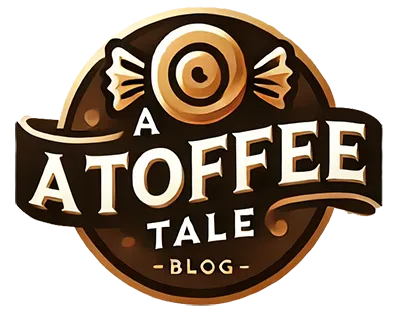Egg Rolls for Dogs: Safe or Harmful?

Egg rolls are iconic delights in the world of cuisine, beloved for their crispy exterior and flavorful fillings. Typically, these delectable treats consist of a savory mixture of ingredients such as cabbage, carrots, and bean sprouts, combined with protein options like pork, shrimp, or chicken. This mouthwatering filling is then wrapped snugly in a thin pastry wrapper before being deep-fried to perfection.
What makes egg rolls truly special is their versatility. While the classic ingredients remain consistent, there’s ample room for creativity and customization. From experimenting with different fillings to varying the wrapping technique, there are endless possibilities to suit every taste preference. Whether you prefer a traditional pork and vegetable filling or opt for a modern twist with ingredients like tofu or mushrooms, there’s an egg roll variation to satisfy every craving.
Beyond their delicious taste and crunchy texture, egg rolls hold cultural significance in many parts of the world. In Chinese cuisine, for example, egg rolls are often enjoyed during festive occasions and celebrations, symbolizing prosperity and good fortune. Similarly, in other Asian cultures and beyond, egg rolls are cherished as a comfort food that brings people together around the dining table.
So, whether you’re indulging in a plate of egg rolls at your favorite Asian restaurant or mastering the art of homemade egg rolls in your own kitchen, these savory delights are sure to delight your taste buds and add a touch of culinary flair to any meal.So join us as we will explore that-can dogs eat egg roll?
Ingredients in Egg Rolls
Egg rolls are a popular dish enjoyed by many, but it’s essential to be mindful of the ingredients, especially when it comes to sharing them with your furry friends. Here’s a breakdown of the common ingredients found in egg rolls and their implications for dogs:
Common Ingredients
- Vegetables: Egg rolls typically contain a variety of vegetables such as cabbage, carrots, and bean sprouts. These provide texture, flavor, and essential nutrients to the dish.
- Meats: Cooked meats like pork, chicken, or shrimp are often included in egg rolls, adding protein and richness to the filling.
- Spices: Various spices and seasonings are used to enhance the flavor of egg rolls, such as ginger, garlic powder, and black pepper.
- Wrappers: Egg roll wrappers are made from a combination of flour, water, and sometimes eggs. They provide a crispy exterior to the egg roll when fried.
Potentially Harmful Ingredients for Dogs
- Onions: Onions contain compounds that can be toxic to dogs, leading to damage to red blood cells and potentially causing anemia.
- Garlic: Like onions, garlic contains substances that can be harmful to dogs, particularly in larger quantities.
- Soy Sauce: Soy sauce is high in sodium, which can lead to dehydration and electrolyte imbalances in dogs if consumed in excess.
Safe Ingredients
- Cooked Meats: Lean, cooked meats like chicken or pork can be safe for dogs to consume in moderation, as long as they are free from seasonings, spices, and sauces that could be harmful.
- Certain Vegetables: While some vegetables like onions and garlic are toxic to dogs, others like cabbage and carrots are safe and can provide nutritional benefits when cooked and served plain.
While egg rolls can be a tasty treat for humans, they may contain ingredients that can be harmful to dogs. It’s important to be aware of the ingredients and avoid sharing egg rolls or any foods containing potentially harmful substances with your furry friend. Instead, opt for safe alternatives and treats specifically formulated for dogs to ensure their health and well-being.
Potential Health Risks for Dogs
Feeding certain foods to dogs can pose significant health risks. Here are some potential dangers to be aware of:
Digestive Issues
- High-Fat Content: Foods with a high-fat content, such as certain meats and fried dishes, can lead to digestive upset in dogs. Consumption of fatty foods may result in vomiting, diarrhea, or pancreatitis.
- Spices: Spices commonly used in human dishes, such as garlic, onion, and black pepper, can irritate a dog’s digestive system. Spicy foods may cause stomach discomfort, vomiting, or diarrhea in some dogs.
Risk of Sodium Toxicity
- High-Sodium Ingredients: Foods containing high levels of sodium, such as soy sauce and other condiments, can lead to sodium toxicity in dogs. Excessive sodium intake can result in dehydration, electrolyte imbalances, and other health problems.
Possible Allergic Reactions
- Specific Ingredients: Some dogs may be allergic to certain ingredients commonly found in human foods. Allergic reactions can manifest as itching, skin rashes, hives, swelling, digestive upset, or respiratory issues.
It’s important to be mindful of the potential health risks associated with feeding certain foods to dogs. High-fat content, spices, sodium toxicity, and allergic reactions are among the potential dangers to consider. To ensure your dog’s health and well-being, avoid feeding them foods that contain ingredients known to cause adverse reactions or health problems. Instead, opt for safe and dog-friendly alternatives to keep your furry friend happy and healthy. If you suspect your dog has consumed something harmful or is experiencing any adverse reactions, consult with your veterinarian for proper guidance and treatment.
Safe Feeding Practices for Dogs
Ensuring your dog’s diet is both enjoyable and healthy involves implementing safe feeding practices. Here are some essential guidelines to follow:
Importance of Moderation and Occasional Treat Giving
- Balanced Diet: Treats should complement your dog’s regular diet, not replace it. While treats can be a fun way to reward your dog or provide enrichment, they should be given in moderation to prevent overconsumption and nutritional imbalances.
- Preventing Obesity: Overfeeding treats can contribute to weight gain and obesity in dogs, which can lead to various health issues such as joint problems, diabetes, and heart disease. Limit treats to occasional rewards and avoid excessive indulgence.
Guidelines for Portion Control
- Consider Size and Health: Portion sizes should be tailored to your dog’s size, weight, age, and activity level. Smaller dogs require smaller portions, while larger breeds may need slightly larger servings. Take into account your dog’s overall health status, including any medical conditions or dietary restrictions.
- Caloric Intake: Treats should not exceed 10% of your dog’s total daily caloric intake. Calculate the recommended daily calories for your dog based on their size and activity level, and adjust treat portions accordingly to maintain a healthy weight.
Monitoring for Adverse Reactions
- Observation: After introducing a new food or treat, closely monitor your dog for any signs of adverse reactions or digestive issues. These may include vomiting, diarrhea, lethargy, itching, skin rashes, or changes in behavior or appetite.
- Trial Period: Introduce new foods or treats gradually, offering small amounts initially to gauge your dog’s response. If your dog tolerates the new food well, you can gradually increase the portion size over time.
By following safe feeding practices, including moderation, portion control, and vigilant monitoring for adverse reactions, you can ensure your dog enjoys a healthy and balanced diet. Treats should be given as occasional rewards and should not compromise your dog’s overall nutrition. If you notice any signs of digestive upset or adverse reactions after introducing a new food or treat, consult with your veterinarian for guidance and proper management.
Alternative Treat Options for Dogs
When it comes to treating your furry friend, there are plenty of alternative options that are both safe and nutritious. Here are some options to consider:
Homemade Dog-Friendly Egg Roll Recipes
- Lean Proteins: Create homemade egg rolls using lean proteins such as chicken, turkey, or fish. These proteins provide essential nutrients without the excess fat found in traditional egg rolls.
- Healthy Vegetables: Incorporate dog-friendly vegetables like carrots, peas, spinach, and green beans into your homemade egg roll recipes. These veggies add vitamins, minerals, and fiber to your dog’s diet while providing a satisfying crunch.
- Safe Wrappers: Instead of traditional flour-based wrappers, use alternatives like rice paper or whole grain wraps. These options are lower in calories and carbohydrates, making them a healthier choice for your pet.
Commercial Dog Treats Designed to be Safe and Nutritious
- Nutritious Formulations: Look for commercial dog treats made with high-quality, nutritious ingredients that are specifically formulated for canine consumption. These treats should be free from artificial colors, flavors, and preservatives.
- Variety of Options: Commercial dog treats come in a variety of flavors, textures, and shapes to suit your dog’s preferences. Whether your dog prefers crunchy biscuits, chewy treats, or freeze-dried snacks, there’s a nutritious option available.
- Tailored Nutrition: Some commercial dog treats are designed to address specific dietary needs or health concerns, such as dental health, joint support, or weight management. These treats provide targeted nutrition to support your dog’s overall well-being.
Benefits of Choosing Treats Specifically Formulated for Dogs
- Promotes Health and Wellness: Treats specifically formulated for dogs provide essential nutrients that support your pet’s overall health and well-being. They contribute to a balanced diet and help maintain your dog’s weight, energy levels, and immune function.
- Supports Digestive Health: High-quality dog treats made with natural ingredients are easier for dogs to digest, reducing the risk of gastrointestinal upset or food sensitivities. These treats promote healthy digestion and nutrient absorption.
- Strengthens the Bond: Sharing nutritious treats with your dog strengthens the bond between you and your furry friend. It reinforces positive behaviors and encourages mutual trust and affection.
Choosing alternative treat options, such as homemade recipes using dog-friendly ingredients or commercial treats specifically formulated for dogs, ensures your pet receives safe and nutritious snacks. These options promote your dog’s health and well-being while satisfying their cravings for tasty treats. By choosing wisely, you can provide your dog with delicious snacks that contribute to their overall happiness and vitality.
Consulting with a Veterinarian for Dietary Changes
When it comes to your dog’s diet, seeking professional advice from a veterinarian is essential for their health and well-being. Here’s why discussing dietary changes with a vet is crucial:
Importance of Discussing Dietary Changes
- Expert Guidance: Veterinarians have the knowledge and expertise to provide personalized advice tailored to your dog’s individual needs. They consider factors such as age, breed, size, weight, activity level, and any existing health conditions when making dietary recommendations.
- Preventing Health Issues: Introducing dietary changes without proper guidance can lead to nutritional imbalances, digestive upset, allergic reactions, or other health problems in dogs. Consulting with a vet helps prevent these issues and ensures your dog’s diet remains safe and nutritious.
Personalized Dietary Recommendations
- Tailored Nutrition Plans: Vets can develop customized nutrition plans that address your dog’s specific dietary needs and support their overall health and well-being. These plans may include recommendations for suitable foods, portion sizes, feeding schedules, and dietary supplements.
- Addressing Health Conditions: If your dog has underlying health conditions such as obesity, diabetes, food allergies, or gastrointestinal issues, a vet can provide dietary recommendations to manage these conditions effectively. They may recommend specific types of food or ingredients to avoid, as well as alternative options to support your dog’s health.
Recognizing Signs of Unsuitability
- Monitoring Your Dog’s Response: After introducing a new food or making dietary changes, closely monitor your dog for any signs of adverse reactions. These may include vomiting, diarrhea, lethargy, itching, skin rashes, changes in behavior or appetite, or any other unusual symptoms.
- Seeking Veterinary Advice: If you notice any symptoms that indicate a particular food is not suitable for your dog, consult with your veterinarian promptly. They can help identify the cause of the problem, provide appropriate treatment, and recommend alternative dietary options if necessary.
Conclusion
Discussing dietary changes with a veterinarian is essential for ensuring your dog receives optimal nutrition and stays healthy. Vets provide personalized dietary recommendations based on your dog’s individual needs, helping prevent potential health issues and ensuring their diet remains safe and nutritious. By recognizing signs that a particular food may not be suitable for your dog and seeking veterinary advice when needed, you can provide your furry friend with the best possible care and support.




